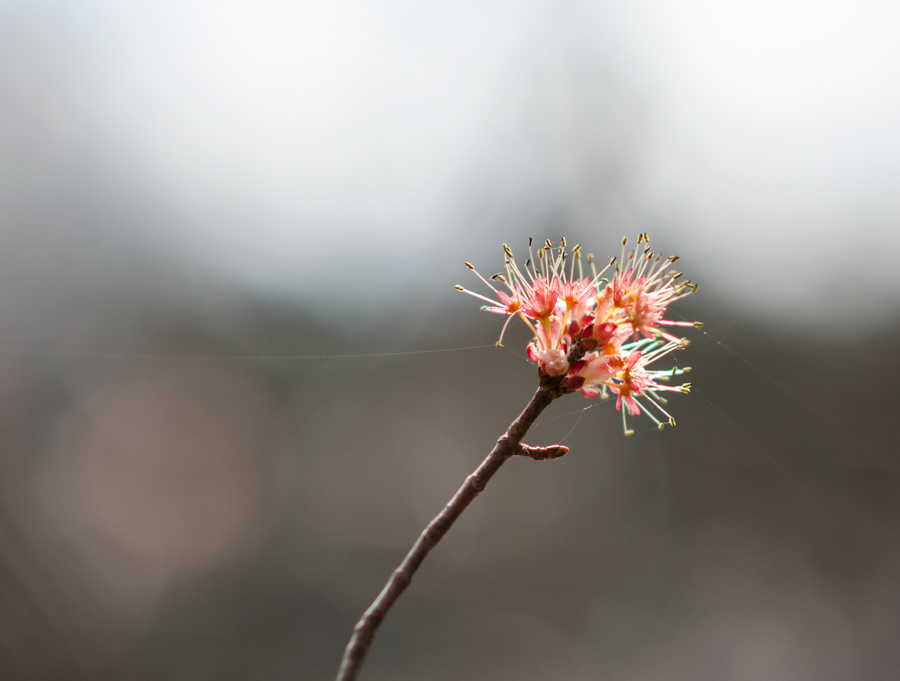 This fancy little blossom is on a male Red Maple (I think). The blossoms on female Red Maples are not as showy and not loaded with pollen like this one.
This fancy little blossom is on a male Red Maple (I think). The blossoms on female Red Maples are not as showy and not loaded with pollen like this one.
Red Maple (Acer rubrum)

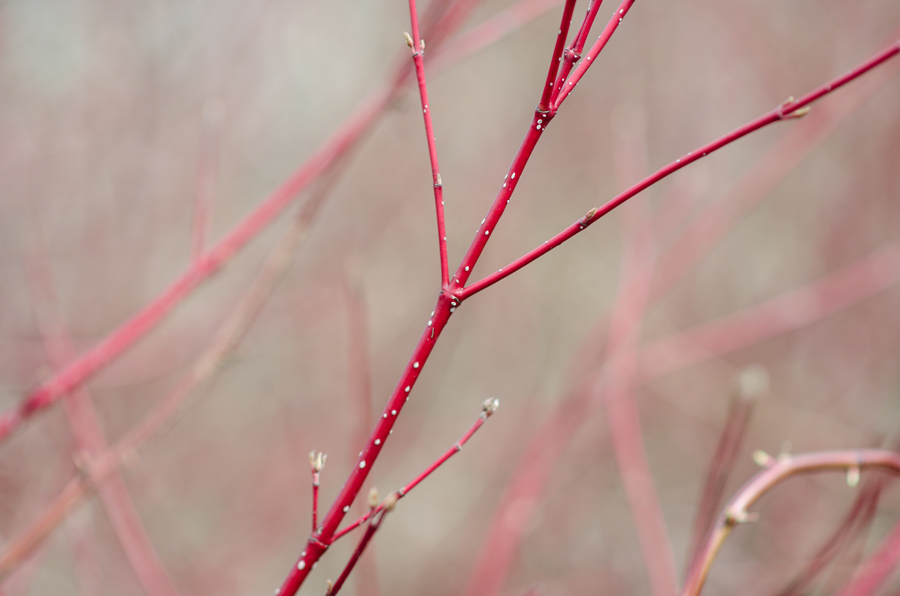 In the gray and brown landscape of early spring, it’s heartening to see these clouds of red stems. They like wetlands, and these are in the wetland border along the Charles. The bark responds to the increased light of spring by becoming brighter red. Native people used it for all kinds of things, like making dye from the inner bark and brushing teeth with peeled twigs. Native throughout northern and western North America.
In the gray and brown landscape of early spring, it’s heartening to see these clouds of red stems. They like wetlands, and these are in the wetland border along the Charles. The bark responds to the increased light of spring by becoming brighter red. Native people used it for all kinds of things, like making dye from the inner bark and brushing teeth with peeled twigs. Native throughout northern and western North America.
Red-osier dogwood, red-twig dogwood (Cornus sericea)
Looking for color wherever it might be—these are a beautiful deep blue. The fruit becomes edible after a frost, and is then eaten by birds. Black Haw has a long history of medicinal uses, mostly for all kinds of women’s issues, primarily to prevent miscarriages and ease menstrual cramps. It’s a decoction of the bark that is used—it contains a chemical relative of aspirin as well as other active components. However it is not “recognized as safe” by the FDA. Adoxaceae family. Native.
Blackhaw Viburnum, Sweet Haw, Black Haw, Stag Bush (Viburnum prunifolium)
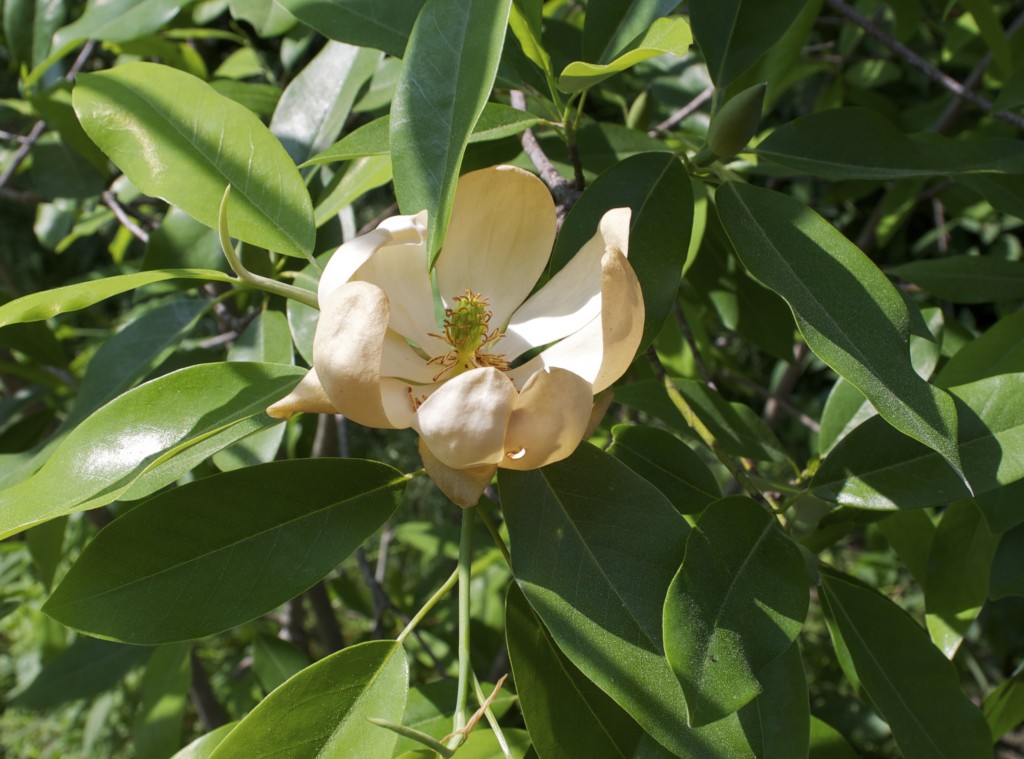
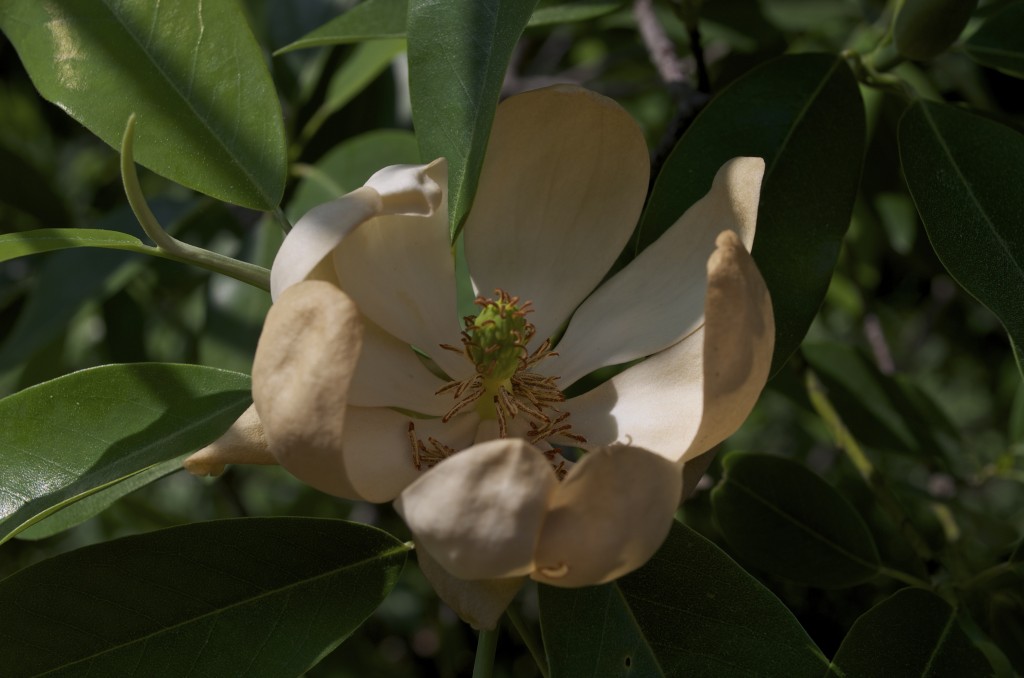 This is growing near the pond at Centennial. It’s native to the southeastern U.S…. The inner bark is mildly scented, like bay laurel. The flowers have a vanilla scent. This species was collected in 1678 and sent to England, and was the first kind of magnolia cultivated in England.
This is growing near the pond at Centennial. It’s native to the southeastern U.S…. The inner bark is mildly scented, like bay laurel. The flowers have a vanilla scent. This species was collected in 1678 and sent to England, and was the first kind of magnolia cultivated in England.
Sweetbay Magnolia, Swamp Magnolia, Beaver Tree (Magnolia virginiana)
One of these is in bloom by the pond at Centennial as well. Red ripening to black fruit. The fruit is edible — black cherries! Lifespan can be 250 years. The bark was used for cough medicine and sedatives. The timber is red and used for furniture making. “A favorite drink in pioneer Appalachia was cherry bounce, in which rum or brandy was flavored with black cherry fruits.” Native to eastern North America. Family Rosaceae
Black Cherry, Mountain Black Cherry, Rum Cherry, Wild Black Cherry (Prunus serotina)
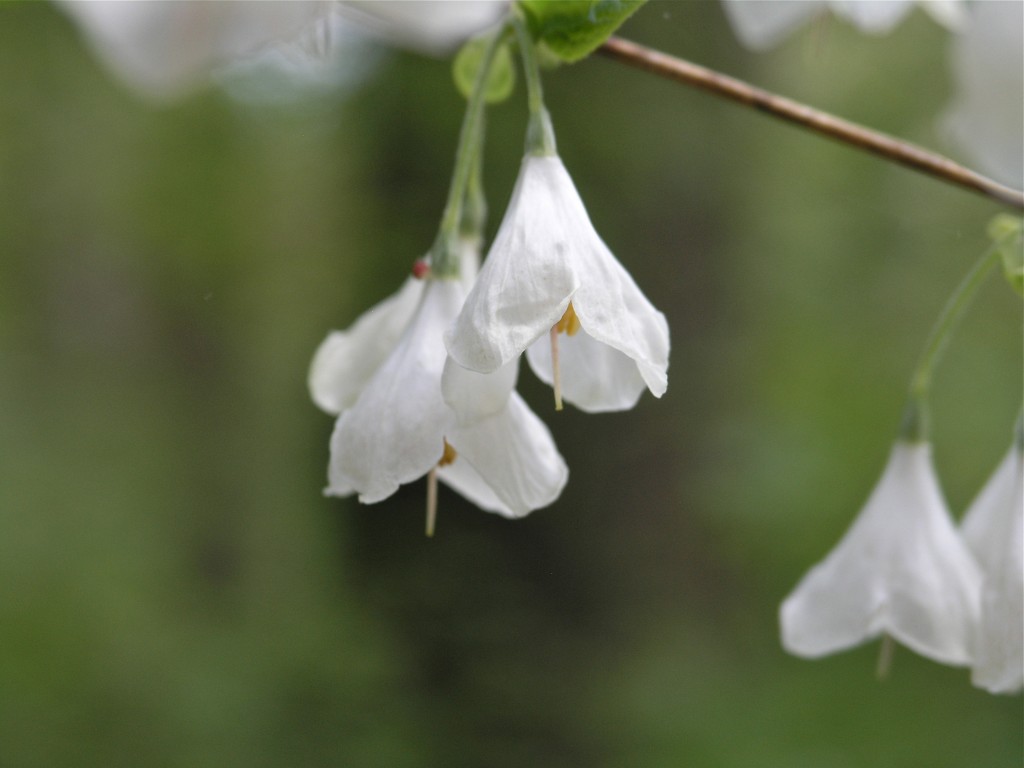 Alert Flowerophile Donna is really on the ball here, spotting a bunch of these little trees at Centennial. They are full of these big white blossoms and I can’t believe I never noticed them in previous years. These are native to the U.S., but primarily occur in more southern regions (like South Carolina to Texas), so I don’t know if these might have wandered out from someone’s yard? They’re very striking.
Alert Flowerophile Donna is really on the ball here, spotting a bunch of these little trees at Centennial. They are full of these big white blossoms and I can’t believe I never noticed them in previous years. These are native to the U.S., but primarily occur in more southern regions (like South Carolina to Texas), so I don’t know if these might have wandered out from someone’s yard? They’re very striking.
Silver bell, Snowdrop tree (Halesia diptera)